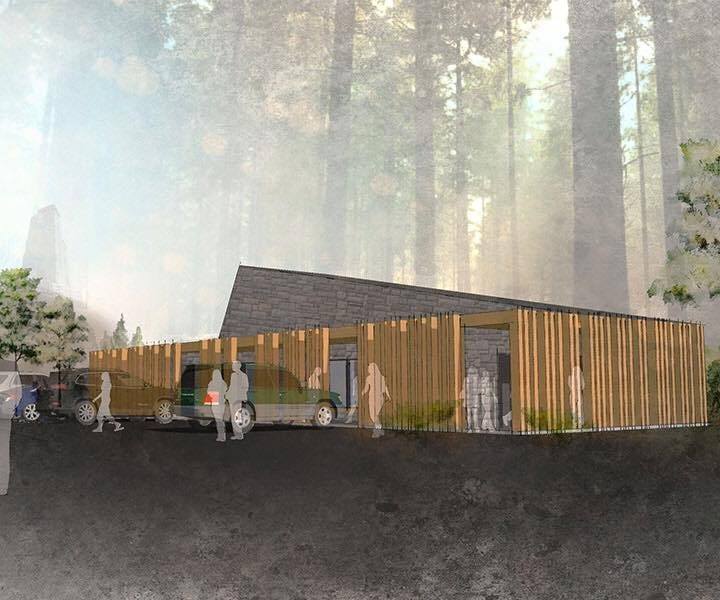“Incongruous” was the word on many lips that night.
At the community forum last week, Patano Studio Architects and Washington State Parks staff presented plans for new ADA-compliant bathrooms at the top of Mount Constitution. The new building will replace the old KVOS television broadcasting building that has in recent years housed the Summit Learning Center operated by the Friends of Moran State Park. The “comfort station” building plans have been approved by state parks management and will be submitted to the San Juan County permitting department in short order. The building is hoped to be the first phase of a larger building project that will ultimately wrap around the restrooms. The second phase building, to be constructed in the future with as-yet unsecured funds, could house an interpretive center, retail space and the Friends of Moran.
The new restrooms will be constructed over one end of the existing building footprint. Attendees mainly weren’t happy with the modernist design approach, which features a brigade of rough-cut, rectangular heavy timbers spaced along the outside walls; the term “barcode” was heard uttered more than once, and architects Fred Klein and David Kau both commented on what seemed to them, “gratuitous use” of heavy timber. Multiple Friends of Moran State Park members, as well as other attendees, spoke wistfully of the park’s other buildings, constructed in a rugged, rustic style featuring horizontal logs and stone reminiscent of a bygone era. A couple of attendees did say they liked the new design.
Derek Gustafson, state parks’ Capital Program Coordinator for the Northwest Region, explained that time is of the essence, as the project has received $225,000 in state funding that will be lost if the restrooms are not completed by the end of the budget biennium in June 2018. The current facilities are badly out of ADA compliance, leaving the park vulnerable to an access lawsuit at any time.
“It’s essentially a box,” Gustafson said of the tightly designed restroom unit, which will consist of three individual-use restrooms, a maintenance chase and a water system area. The space is fully ADA-compliant, with the required 5-foot turn radii, grab bars, appropriate sink heights etc.
“We think it’s quite elegant and beautiful,” said architect Christopher Patano. “It doesn’t take up any unnecessary space.” Stone veneer will be added along an interior wall if there is room in the budget, and Patano hopes to use mainly locally grown timber.
Parks staff and the architects say they will apply community feedback to their dreams for the Interpretive Center. Parks’ Historic Preservation Planner Alex McMurray said the area is classified as a Heritage Site, and parks guidelines encourage new buildings to be either clearly modern, or, if given a historic look, buildings must not pretend to be actually historic.
Parks will ask for $1.1 million in funding, with $400,000 designated for exhibit design and fabrication. If funding is obtained, parks staff hopes to begin the design process for the second phase in July 2017, starting construction in October 2018, with completion by June 2019. Patano’s preliminary concept for the interpretive center include more rough-sawn, squared vertical timbers “matching the verticality of the surrounding forest” as well as some stone work, with the key feature being a large view window the looks toward the stone tower.
“We take the time to come out here and hold these community forums because it’s important,” said Patano. “We’re hearing you.”




